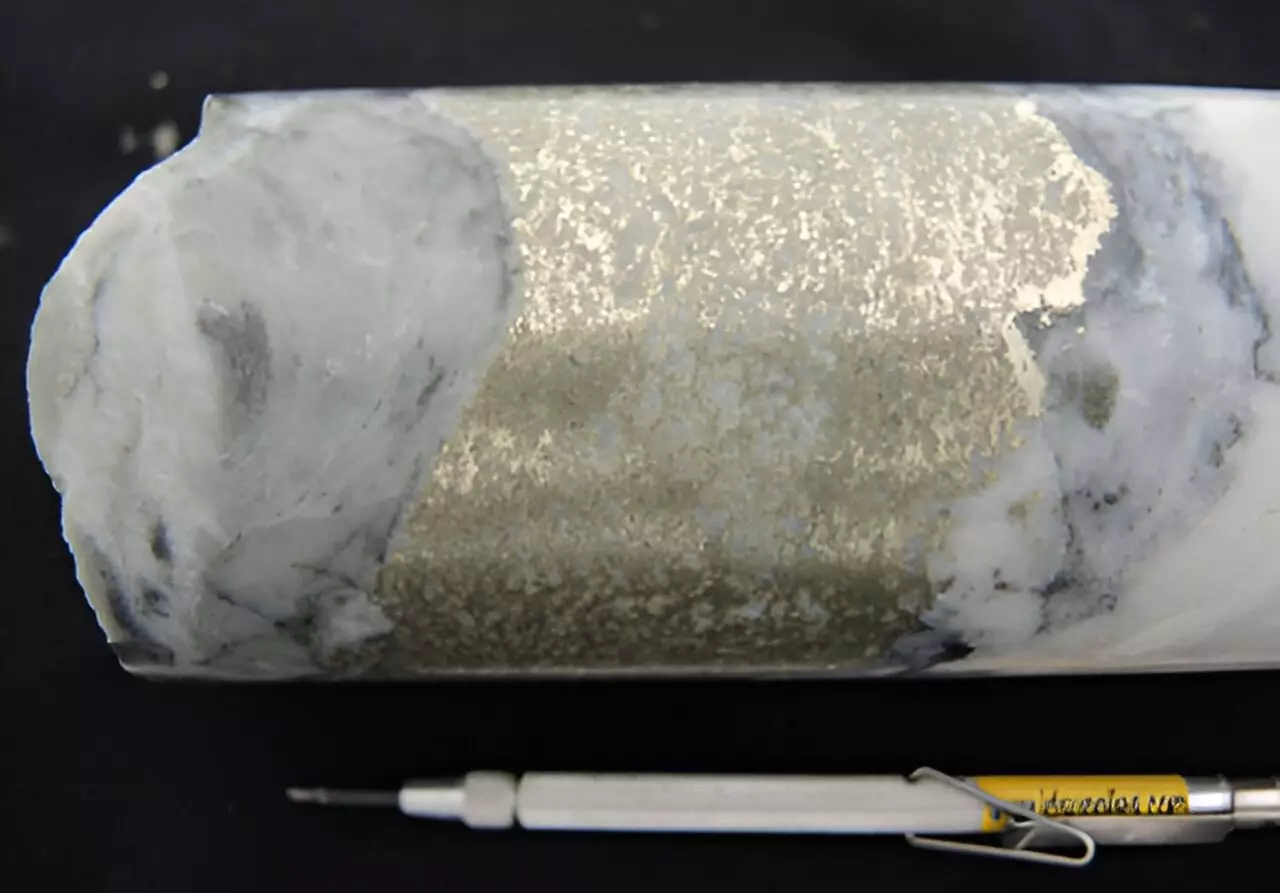Gold’s mystique has captivated humanity for millennia, yet its origins remain a complex enigma rooted deep within Earth’s geological history. Traditional mining practices, primarily land-based, often lead to extensive environmental degradation. Recent groundbreaking research, however, offers a compelling glimpse into the processes that could revolutionize how we find and extract gold—potentially shifting the paradigm from terrestrial to submarine sources. By unraveling how seawater interacts with ore fluids to produce high-grade gold deposits, scientists are opening new horizons for sustainable mineral exploration, especially in the hidden depths of our oceans.
This recent study focuses on ancient rocks from the remote Brucejack deposit, located in northwestern British Columbia. These rocks, which formed approximately 183 million years ago during the Early Jurassic period, were part of a submerged volcanic island arc, now exposed due to plate tectonic shifts. Analyzing these samples with state-of-the-art chemical techniques revealed a startling insight: seawater played a crucial role in the formation of gold deposits, a finding that overturns previous assumptions that most gold is derived solely from volcanic or magmatic sources. The discovery that seawater, rich in sodium ions, facilitated the clumping of gold nanoparticles suggests a process akin to the souring of milk—a novel analogy that underscores the unique chemistry involved.
This insight has profound implications. It indicates that gold deposits might form more readily in submarine environments, particularly in oceanic crust and deep-sea trenches, where conditions are ripe for similar chemical interactions. This challenges conventional thinking that narrow the search for gold to land-based or shallow mineral deposits. Instead, it points to the ocean floor as a vast, largely untapped resource, where high-grade gold veins could naturally develop in sub-seafloor settings. As a result, the potential for discovering economically viable deposits beneath the ocean has suddenly become more tangible.
Implications for the Future of Gold Mining and Sustainability
The environmental toll of traditional gold mining is undeniable—large-scale extraction depletes landscapes, pollutes ecosystems, and consumes significant energy and water resources. As the world shifts towards greener technologies and a transition to renewable energy sources intensifies, the demand for critical minerals like gold escalates. Here lies the importance of this research: unlocking submarine deposits could radically reduce the environmental footprint associated with mineral extraction.
The innovative understanding that seawater influences gold nanoparticle clustering offers a new vista for exploration technology. Rather than invasive excavation, future efforts could focus on understanding how to harness these natural processes within oceanic crusts. If high-grade deposits form in marine environments, then the ocean becomes not just a resource to explore, but a sustainable frontier for mineral harvesting—potentially less disruptive, profoundly larger in scale, and vital for meeting the demands of green-energy applications.
Moreover, the presence of gold in deep ocean environments could accelerate debates around offshore mining regulation and technological advancements needed to access these resources safely. While this prospect raises environmental concerns, the potential for more efficient and less destructive extraction methods makes oceanic mining a compelling alternative to the destructive practices of terrestrial mining.
Bridging Science and Industry: A New Era of Exploration
The implications extend beyond geology into the broader sphere of resource management and technological innovation. If seawater-driven gold formation is confirmed across various submarine settings, exploration strategies will need to adapt rapidly. This could lead to the development of specialized deep-sea exploration tools, innovative extraction technologies, and international policy frameworks aimed at responsible ocean resource management.
Critically, this research shifts the narrative from viewing the Earth’s crust as the sole home of mineral wealth to recognizing the ocean floor as a vital, dynamic environment capable of generating high-quality mineral deposits. It challenges investors and policymakers to reconsider the economic viability of underwater mining and the necessary safeguards to prevent ecological harm.
From my perspective, the potential benefits of pioneering oceanic gold extraction are enormous but must be balanced with caution. Deep-sea ecosystems are delicate, and our burgeoning understanding of the chemistry involved demands careful, regulated approaches. As scientists, we must champion responsible innovation—leveraging nature’s own processes without repeating the environmental scars of past mining practices. The next frontier in gold exploration promises sustainability and scientific marvel, provided we proceed with respect and a commitment to protecting our planet’s precious ecosystems.

